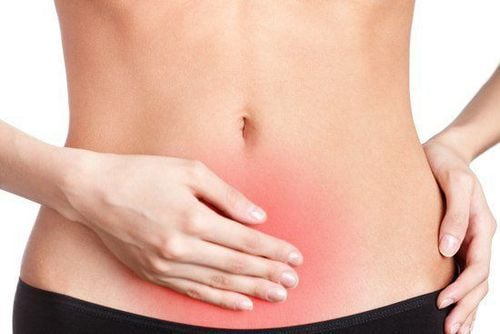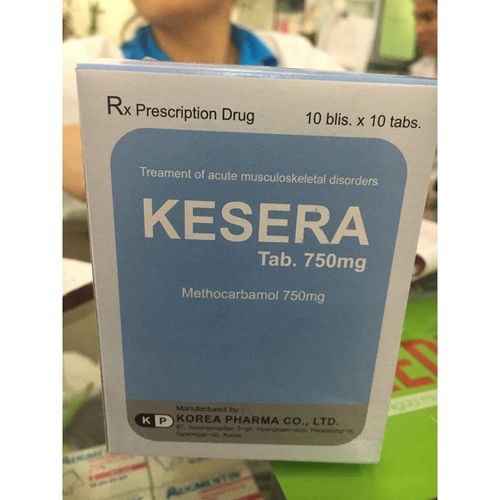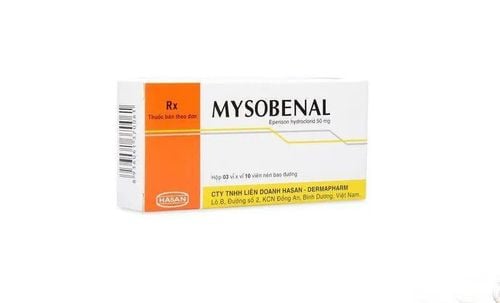This is an automatically translated article.
Easily anger, worry, lose focus, headache, fatigue, discomfort in hands and feet, ... are premenstrual symptoms that quite a few women encounter. Accordingly, premenstrual dysphoric disorders are a similar health problem to premenstrual syndrome, but they are more severe.
About 20-40% of women experience mild to severe premenstrual symptoms. In fact, PMS and PMS are both health concerns of concern, but they vary in severity. Both of these conditions present with symptoms of emotional, behavioral, and/or physical disturbances, but premenstrual dysphoric disorder causes dramatic mood swings and can disrupt Daily life is even damaging relationships. Learn more about premenstrual dysphoric disorder in the article below.
1. Symptoms of PMS Symptoms of PMS usually begin a few weeks before menstruation and end with the onset of menstruation or may persist until later. menstruation in premenopausal women. Most of the time they are severe and make the person tired, unable to perform daily activities.
Premenstrual symptoms include the following 3 groups:
Premenstrual symptoms related to emotional disturbances:
Depression or feelings of hopelessness Anger and conflict with others Stress, anxiety and irritability Insomnia Forgetfulness Confusion Premenstrual symptoms associated with behavioral disturbances:
Loss of concentration g Fatigue Changes in appetite Feeling out of control Premenstrual symptoms related to physical disorders:
Cramps and bloating Edema, breast tenderness, rapid weight gain due to fluid retention Headache Joint or muscle pain Hot flashes Acne

Các triệu chứng rối loạn tâm thần tiền kinh nguyệt liên quan đến sự rối loạn về cảm xúc
2. Causes and risk factors for premenstrual dysphoric disorder The cause of premenstrual dysphoric disorder is unclear. Possible causes or factors that contribute to an increased risk of PMS include:
2.1 Hormonal changes Hyperprolactinemia Abnormal response to estrogen and progesterone Increased hormone activity ADH or aldosterone Changes in levels of the hormones estrogen and progesterone in relation to the menstrual cycle in women. Many authors believe that it is the decrease in the level of the hormone Estrogen and the increase in the level of progesterone that leads to these disorders. In addition, changes in the hormones estrogen and progesterone can cause temporary fluid retention, like an excess of aldosterone or ADH.
2.2 Serotonin deficiency Some brain cells use serotonin to also control mood, attention, sleep, and pain. There has been some research showing that hormone changes in women can lower serotonin levels, leading to PMDD symptoms, and that taking SSRIs (which increase serotonin) sometimes reduces symptoms of psychosis. premenstrual nerve.
In addition, the causes and risk factors of premenstrual dysphoric disorder are magnesium and calcium deficiency and genetic factors.
3. Diagnosing Premenstrual Psychosis To definitively diagnose premenstrual dysphoric disorder, doctors will ask patients to monitor and evaluate their symptoms daily for 2 or more cycles.
The patient must have ≥ 5 of the following symptoms for most of the week before menstruation and symptoms must persist for at least or completely disappear during the week after menstruation. Symptoms must include at least one of the following:
Significant mood swings Anger, irritability, or conflict with others Feelings of hopelessness, depression, and self-contained thoughts Stress, anxiety In addition, at least one of the following must be present:
Decreased interest in normal activities Poor concentration Decreased energy or fatigue Changes in appetite Disorders Sleep Feeling overwhelmed, out of control Related physical symptoms such as breast tenderness, edema The above symptoms must have been present for most of the previous 12 months, and symptoms must be severe enough and interventional into daily activities and functions.

Tức giận, cáu kỉnh rõ ràng là một trong các triệu chứng rối loạn tâm thần tiền kinh nguyệt
4. Treatment of Premenstrual Disorders 4.1 Antidepressants Selective serotonin-releasing inhibitors (SSRIs) can reduce emotional disturbances and other premenstrual symptoms such as fatigue, appetite and sleep disturbances. Effective SSRIs include fluoxetine, sertraline, paroxetine, and citalopram. These medications may be prescribed continuously or only in the period between ovulation and the start of your period - the luteal phase 14 days later of the menstrual cycle.
4.2 Hormone therapy In women where hormone therapy is effective, drug options include: Oral contraceptives, vaginal progesterone, oral progestogen, long-acting progestin
4.3 Anti-inflammatory drugs One Some over-the-counter pain relievers like aspirin, ibuprofen, and nonsteroidal anti-inflammatory drugs (NSAIDs) can ease premenstrual symptoms such as headaches, breast tenderness, back pain, and cramps.
4.4 Nutritional Supplements Supplementing with 1,200 milligrams of calcium per day may reduce symptoms of premenstrual dysphoric disorder. Vitamin B6, magnesium and L-tryptophan can also be helpful, but talk to your doctor for advice before taking any supplements.
4.5 Psychotherapy Peer group therapy, cognitive behavioral therapy can help people with premenstrual dysphoric disorder improve their symptoms. Studies have shown that cognitive behavioral therapy can significantly reduce PMS symptoms compared to controls.
4.6 Acupressure Acupressure has a definite effect on reducing symptoms. Acupressure involves applying artificial pressure to specific reflex areas on the body.
4.7 Relaxation therapy, massage Muscle relaxation therapy and reading recreational magazines can significantly reduce physical symptoms. Relaxation therapy and massage therapy can improve early symptoms. Most people use relaxation therapy as an adjunct to other treatments.
4.8 Surgery In patients with severe symptoms that cannot be controlled by medication and other methods or who experience too many side effects, the option of bilateral oophorectomy should be considered.
5. Treatment of premenstrual dysphoric disorder according to Traditional Chinese Medicine Traditional medicine does not have a name for premenstrual dysphoric disorder but still refers to premenstrual abnormalities and also includes emotional, physical, and behavioral disorders similar to those seen in PMDD. There are 6 types of diseases and basic remedies for treatment, but depending on the condition of each patient, the doctor has an appropriate reduction in medicine:
5.1 Can stagnation Symptoms: Breast pain before menstruation, swelling or lumps, abdominal distension and pain in both sides, restlessness, mental weakness, or sighing, even restlessness, insomnia, severe headache, swelling of hands and feet, white tongue moss , occult or occult circuit. Treatment: First treatment of gas Remedy: Sai records can spread spices

Thuốc chống trầm cảm có thể làm giảm các rối loạn cảm xúc và các triệu chứng tiền kinh nguyệt
5.2 Blood stasis Symptoms: severe headache in premenstrual period, or pain in the lower back and knees, pain relief with heat, increased pain, or fever during menstruation, abdominal pain, swollen limbs, difficulty in movement scarlet tissue, dark color with lumps, dark purple tongue substance or blood stasis points, waxy pulse. Treatment: Physiotherapy, activating blood, chemical stasis, and communication Remedy: Blood pressure axis stasis increases 5.3 Blood damage Symptoms: dizziness and headache during or after menstruation, palpitations, lack of sleep, mental fatigue , or body aches and pains, weakness in limbs, frequent fever, night sweats, shortness of breath and shyness to speak, low volume, pale color and pale red tongue, white moss, weak pulse. Treatment: Use oxygen to nourish blood Remedy: bowl pearl thang 5.4 Broken spleen Symptoms: swelling of limbs during menstruation, abdominal distension, loss of appetite, loose stools, or dizziness before and after menstruation, chest tightness and nausea , heavy menstrual bleeding, pale face, pale pink tongue, smooth white tongue moss, flexible or sluggish pulse. Treatment: Sue Pi on Yang Loi Thuy Remedy: Linh Cinnamon Truc Orange Spices 5.5 Kidney damage Symptoms: swollen limbs during menstruation, pain in the waist and knees, loose stools, cold limbs, urine few, heavy menstrual flow, pale and thin color, white mossy tongue substance, and slow pulse. Treatment: Calming kidney, supporting yang and watering Remedy: Chan Vu thang spice 5.6 Kidney yin failure Symptoms: during or after menstruation night sweats, dizziness, pain and weakness in the waist, knees, or swelling breast, often worn out tongue, dry mouth and throat, or hoarseness, agitation, heat in the body, five heart troubles, menstrual period with little pink color or prolonged menstrual period, red tongue substance, little moss, delicate pulse . Treatment: Tu kidney and yin Remedy: Ta Quy Hoan It can be said that premenstrual mental disorders have a great influence on the life and health of women. Therefore, when the symptoms of this disease appear, you should soon go to the medical center for examination and advice on the treatment regimen.
Vinmec International General Hospital is the address for examination, treatment and prevention of diseases, including Obstetrics and Gynecology. When performing the examination process at Vinmec, customers will be welcomed and used modern facilities and machinery along with perfect medical services under the guidance and advice of the doctors. Good doctors, well-trained both at home and abroad. Therefore, when there are signs of premenstrual dysphoric disorder or other abnormalities, you can go to Vinmec for a thorough examination and treatment.
Please dial HOTLINE for more information or register for an appointment HERE. Download MyVinmec app to make appointments faster and to manage your bookings easily.













